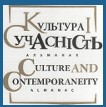РОЛЬ МАРКЕТИНГУ В ДІЯЛЬНОСТІ СУЧАСНИХ ЗАКЛАДІВ КУЛЬТУРИ
ROLE OF MARKETING IN ACTIVITIES OF MODERN CULTURAL INSTITUTIONS
Author(s): Nataliya Mykolayivna GolovachSubject(s): Social development, Sociology of Culture, Marketing / Advertising
Published by: Національна академія керівних кадрів культури і мистецтв
Keywords: cultural institutions; commercial marketing; marketing mix; cultural marketing; cultural product; marketing tools;
Summary/Abstract: The purpose of the article is to study the features of marketing in the field of culture and its role in the activities of cultural institutions in the context of modern socio-cultural transformations of society. The research methodology lies in the application of such methods as comparative analysis and synthesis to highlight the features of using marketing in the field of culture; philosophical and logical to reveal the use of both traditional and new marketing tools by cultural institutions in current conditions of society development. The scientific novelty of the work is that it analyses the use of marketing in both commercial and cultural spheres and identifies the role of marketing in the activities of modern cultural institutions, in particular, the use of new marketing tools. Conclusions. Marketing in the cultural sector has a dual nature and combines the features of the commercial and non-commercial sectors and is a technology for researching those market segments that are interested in a cultural product or service, adapting commercial variables, such as price, location, promotion to establish contact with a sufficient number of consumers, thereby achieving goals compatible with the mission of the cultural institution. Meanwhile, the classical law "4Ps" or the marketing mix is partially applicable to marketing in the cultural sector, as only the promotion of a "product" by a cultural institution can be used to the fullest extent, thus transforming the concept of "4Ps" "1Ps". Marketing in the cultural sector has its own specifics, which should be taken into account when promoting a cultural product, which can be both tangible and intangible, and its implementation can have both commercial and non-commercial components, so cultural institutions create a product and only then look for ways to promote it. However, most cultural institutions do not use marketing communications to the fullest extent, which affects the promotion of a cultural product or service.
Journal: Культура і сучасність
- Issue Year: 2023
- Issue No: 1
- Page Range: 156-161
- Page Count: 6
- Language: Ukrainian

